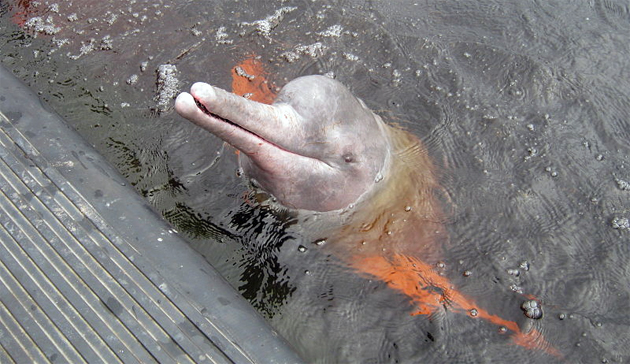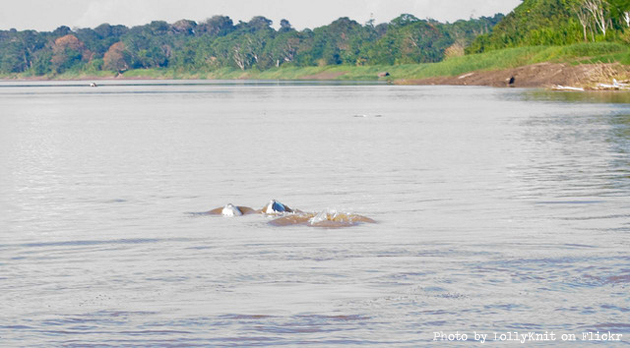The rare Amazon River dolphin — one of the last of its kind — has been declining rapidly, while emerging trends show fishermen are increasingly poaching these animals at alarming rates.
In 2006, National Geographic and other mainstream media reported that researchers had officially declared the Chinese River dolphin, or the “baiji”, had gone extinct. At the time it was one of only five species of freshwater dolphin living on our planet. Today, only four remain. Barely. While three other species live in Asia, they are all facing extinction. Living in the Amazonian region of South America, the Pink Amazon River Dolphin (or “boto”) is the most abundant of all the extant freshwater species — but emerging trends paint a grim future, as the populations are now threatened by increasing poaching.
Record numbers of the boto carcasses are reportedly being found slaughtered by fishermen who use their flesh as bait. Their fatty flesh is very successful in attracting a valuable type of catfish, the “piracatinga” — a popular dish in neighboring Columbia. The Telegraph says that a fisherman can successfully harvest up to roughly 1,100 pounds (about 500 kg) of piracatinga from the flesh of a single river dolphin. With the market paying up to  50 cents per kilogram for the fish, the anglers can apparently make as much as $550 in just a few nights — roughly double what Brazil’s minimum wage workers make in a single month. The amount of piracatinga catfish being harvested has been increasing over the years, peaking at 2,153 tons in 2009.
50 cents per kilogram for the fish, the anglers can apparently make as much as $550 in just a few nights — roughly double what Brazil’s minimum wage workers make in a single month. The amount of piracatinga catfish being harvested has been increasing over the years, peaking at 2,153 tons in 2009.
While it is illegal to kill these dolphins, and the Brazilian government acknowledges this growing problem, it seems little is being done to stop the poaching of the botos. Using the dolphin flesh as bait is highly efficient and free, attracting more fishermen to this method. Dolphin researcher, Antonio Miguel Migueis, explained in the The Telegraph article, “It’s attracting a lot of poor people to this region to kill the dolphins and make easy money.”
These brilliant animals naturally exist in low numbers, but the exact size of the Pink Amazon River dolphin population as a whole is not known. For many years the International Union for the Conservation of Nature (IUCN) has recognized the species’ conservation status as “vulnerable”, but in 2008 it was changed to “data deficient.” Not enough scientific research has been done on the pink dolphins to correctly identify their numbers nor their conservation status. This is of great and growing concern, given the emerging poaching trends.
Top aquatic mammal expert, Vera da Silva, has been studying the botos in Mamiraua Reserve in the western Amazon for 17 years. There, she has observed a decline in the pink dolphins of about 7% (around 1,500 individuals) each year. In The Telegraph article, Da Silva warns, “The population of the river dolphins will collapse if these fishermen are not stopped from killing them.”
Historically, locals have held the botos with high regard, as myths surrounding these animals tell of their magical attributes and powers. Many even consider it bad luck to kill them, but, as Vera da Silva explains, “Killing the dolphins is a fast and easy way for the fisherman to make money. It costs nothing but time.”
Photo #1 by Jorge Andrade via Wikimedia Commons
Photo #2 by Henri Bergius on Flickr
Photo #3 by LollyKnit on Flickr









